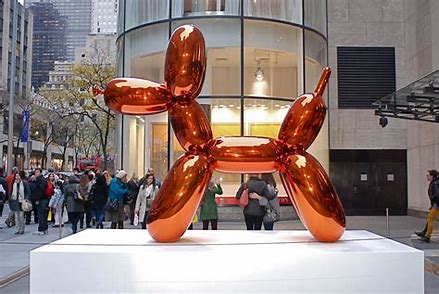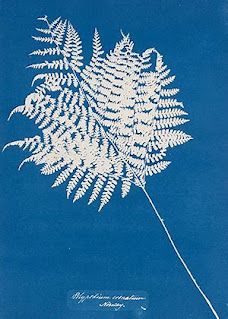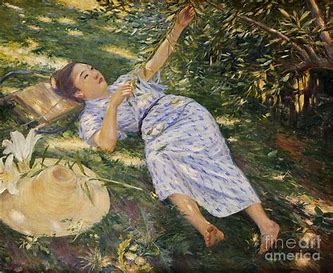Preferences and Perspectives - The Romantic Era
In my Romantic Era Blog, I would like to compare Romanticism and Art Nouveau styles. The first artwork that I would like to introduce is the painting The Cornfield by the famous romantic tradition painter John Constable(1776-1837) and the art nouveau genre painting The Seasons (Summer) by Alphonse Mucha(1860-1939).
The painting The Cornfields was created in 1826 in John Constable's studio in London in oil on canvas, measuring 143x122 cm. It is in the main collection of the National Gallery London, UK. The painting depicts a cornfield on Fen Lane that Constable frequented in his childhood on the way to his school in Dedham. "Constable exhibited the painting at the Royal Academy in 1826. Despite receiving critical praise, it failed to sell, either at the Royal Academy or at any of the four other exhibitions to which Constable sent it."(the cornfield, n.d.) The artwork depicts a rural scene on a hot summer day with a little shepherd boy thirstily drinking cold water on his way with a herd of livestock and his trusty dog.
The painting's composition features several triangular forms, as seen in the shapes of the trees, the shadowy path between the trees, and the cornfield in the background of the painting. The colors are rich and earthy, as they are consistent throughout John Constable's landscape painting. "Constable’s choice of location for this work was not arbitrary; it has deep roots around his region at Flatford Mill. Being part of nature itself helped him depict every detail carefully using pigments such as blue ultramarine mixed with linseed oil to facilitate blending on canvas."(The Cornfield (1826), n.d.) The painter succeeded in capturing the tranquil, lucid, hot summer day atmosphere where nature takes the central place and humans and other live beings are insignificant, which adds to the painting's peaceful and harmonic atmosphere.
The painting I would like to compare to John Constable's The Cornfield is Alphonse Mucha's Lithograph, The Summer from The Seasons series. It is a color lithograph on paper created in Paris, France, in 1896. It consists of four panels, each measuring 99.06x51.12 cm. In this blog, I will only cover the Summer panel.
Alphonse Mucha was born on July 24th, 1860, in a small town in Ivancice, Moravia, which is today part of the Czech Republic. He studied at the Academy of Art in Munich and became successful in poster art design.
Alphonse Mucha personified the seasons in his depictions of nymph-like female figures against a countryside background. In his lithographies, nature and humans became one, following and superseding the romantic tradition of human-nature harmony that beautifully came to life in John Constable's painting The Cornfield. However, for Alphonse Mucha, Summer is a woman sitting on the river bank draped in flowy clothing that seems to be falling off, exhausted by the day's heat and dipping her toes into the cool water. Her upper body and head rest on the vines of the plants surrounding her, and her head is adorned with red poppies. It is interesting how John Constable and Alphonse Mucha both associated summer with heat and relief in water, as seen in the little boy drinking cool water in John Constable's painting, similar to the female figure resting close to the water in Alphonse Mucha's lithography.
In The Summer lithography panel, the mesmeric female figure embodies the mood of summer, presenting the organic harmony with the rhythms of nature and existing in perfect unison with the nature surrounding them. The elegant, curvy lines of grape vines that the female figure rests upon flow into her tangled and cascading hair, creating a luxurious and sensual mood. The colors are warm and vivid in the red and orange palette and set distinctly from the white and light blue summer sky backdrop.
I consider both artworks masterpieces of the romantic art genre. It is nearly impossible to give a preference to any of these perfect examples of iconic romanticism and art nouveau-style chef d`oeuvre. However, John Constable's painting takes me down memory lane, filled with hot, worry-free summer days when the days seemed endless, and the shadow of old trees could be a foreign land filled with adventures and discoveries.
The second pair of romantic and art nouveau artworks are the paintings of Caspar David Freidrich(1774-1840), Two Men Contemplating the Moon, and Aubrey Beardsley(1872-1898), with his illustration The Climax, for Salome by Oscar Wilde.

The painting Two Men Contemplating the Moon was created in 1825-30 and is oil on canvas. It measures 13 3/4 x 17 1/4 inches (34.9 x 43.8 cm) and is currently displayed at the Metropolitan Museum of Art. The painting presents a rocky landscape with an old gnarly tree leaning to the right of the painting and two male figures wearing "old German" fashioned clothes that are a clue to the painter's patriotism are framed by branches, twigs, and boulders standing on the stony, sloped path. One of the male figures leans on a walking stick while the other, later identified as August Heinrich, a student and friend of the painter, leans forward with his right arm over his friend's shoulder. They are on an evening walk and philosophizing about the waxing moon. The artist depicted the two men turning their backs to the viewer in their deep communication with each other and nature, which allows the public to immediately be confronted with the nocturnal atmosphere of the painting and the realization of how fleeting and fragile human existence is in the perspective of everlasting nature.
Freidrich uses a subtle color palette and emphasizes the light, creating a symbolic and spiritual minimalistic painting. Born in Dresden, Germany, Casper Freidrich was "Working in the vanguard of the German Romantic movement, which championed a radical new understanding of the bond between nature and the inner self, Friedrich developed pictorial subjects and strategies that emphasize the individuality, intimacy, open endedness, and complexity of our responses to the natural world."(Casper Friedrich Soul of Nature, n.d.)
Audrey Beardsley's The Climax, for Salome by Oscar Wilde is a process print from line block and measures 8 15/16 x 6.7/16 inches (22.7 x 16.4 cm) and is housed at the Metropolitan Museum of Art in New York. "Print by Aubrey Beardsley, 'The Climax,' plate XV from 'A Portfolio of Aubrey Beardsley's drawings illustrating 'Salome' by Oscar Wilde,' published by John Lane, London, 1907, redrawn from the print by Aubrey Beardsley, 'J'ai baisé ta bouche Iokanaan', illustration to Oscar Wilde's play 'Salome,' published in 'The Studio,' Vol. 1, No. 1, 1893, line block print on Japanese vellum"(The Climax V&A, 2009)

Aubrey Beardsley was an exceptional art nouveau artist, leaving a body of work that featured distinctive black and white artworks as provocative and eccentric as his persona. Born on August 21st, 1872, in Brighton, Sussex, UK, Aubrey Beardsley's artistic journey unfolded throughout his tragically short life and was aimed at societal Victorian perceptions, personal health struggles, and graphical traditions. Inspired by Japanese prints, Beardley developed a distinctive style featuring precise lines and Art Nouveau-style organic motifs. In his The Climax drawing for Oscar Wilde's Salome (a one-act tragedy), he presents the climatic scene of Salome reveling in the execution of Jokanaan. Salome is depicted levitating in the trance of revenge, holding the severed head that drips blood, nourishing a Lilly, which is a symbol of purity and impurity at the same time.
The visual narrative is incredibly powerful, showing Salome's triumph, power, and eroticism. Her hair floating above her head reminiscences about Medusas snakes, contrasting with her white, nearly ephemeric body in front of the quarter moon and stylized peacock feathers.
Like in Casper Freidrich's painting, there are two figures with the moon in the background; however, the artworks couldn't be more different. While Casper Freidrich's painting excludes melancholy, serenity, and nostalgia, Aubrey Beardsley's illustration offers culminating drama, powerful emotion, and theatricality.
Both artworks are influential and extraordinary, even though they are highly distinctive. Although Casper Freidrich's painting is one of my childhood favorites, my personal preference currently migrates toward Aubrey Beardsley's provocative, intensely eccentric, and decadent style.
Resouces cited
“Alphonse Mucha, the Seasons: Summer, Autumn, Winter, Spring, 1896.” Gallery 19C, www.gallery19c.com/artists/131-alphonse-mucha/works/9449/. Accessed 15 Mar. 2024.
“Aubrey Vincent Beardsley: The Climax, for Salomé by Oscar Wilde.” The Metropolitan Museum of Art, www.metmuseum.org/art/collection/search/822368. Accessed 16 Mar. 2024.
“Caspar David Friedrich: The Soul of Nature.” The Metropolitan Museum of Art, www.metmuseum.org/exhibitions/caspar-david-friedrich-the-soul-of-nature. Accessed 15 Mar. 2024.
“Caspar David Friedrich: Two Men Contemplating the Moon.” The Metropolitan Museum of Art, www.metmuseum.org/art/collection/search/438417. Accessed 15 Mar. 2024.
“The Climax: Lane, John: Beardsley, Aubrey Vincent: V&A Explore the Collections.” Victoria and Albert Museum: Explore the Collections, 11 Feb. 2009, collections.vam.ac.uk/item/O187319/the-climax-print-beardsley-aubrey-vincent/.
“The Cornfield (1826) by John Constable.” Artchive, www.artchive.com/artwork/the-cornfield-john-constable-1826/. Accessed 14 Mar. 2024.
“John Constable, the Cornfield.” John Constable | The Cornfield | NG130 | National Gallery, London, www.nationalgallery.org.uk/paintings/john-constable-the-cornfield. Accessed 14 Mar. 2024.





Comments
Post a Comment